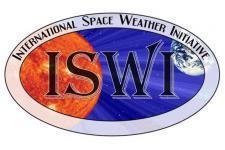The sun is the main source of space weather. Sudden bursts of plasma and magnetic field from the sun's atmosphere called coronal mass ejections (CME) together with sudden brightening of radiation, or solar flares, and high-speed solar winds could cause space weather effects here on Earth. Space weather events can produce electromagnetic fields that might damage space-borne and ground-based technological systems, such as power lines, navigation systems, human space flights, electric power transmission, high-frequency radiocommunications, global navigation satellite system (GNSS) signals, global positioning system (GPS), oil and gas pipelines, among other things.
The strongest space weather event on record is the geomagnetic storm of 1859, also known as Carrington Event, during which telegraph lines were electrified and Northern Lights (electrically charged particles from the sun that enter Earth's atmosphere) were visible as far south as Cuba and Hawaii. Another well-known space event is the collapse of the Hydro-Québec power network on March 13, 1989 due to geomagnetically induced currents (GICs), which led to a nine-hour blackout that affected over six million people. The geomagnetic storm causing this event was the result of a CME ejected from the sun on March 9, 1989.
Recognizing the importance of international cooperation to advance space weather science, the Committee on the Peaceful Uses of Outer Space (COPUOS) established in 2009 the International Space Weather Initiative (ISWI). ISWI is a follow-up activity of the International Heliophysical Year (IHY 2007), which involved more than 70 countries during a two-year period from February 2007 to February 2009. IHY 2007 was an international programme of scientific research to understand external drivers of planetary environments and universal processes in solar-terrestrial-planetary-heliospheric physics, as well as focusing on advancements in all aspects of the heliosphere, its interaction with the interstellar medium and its effects on planet Earth.
The goal of ISWI is to develop the scientific insight necessary to understand the science, and to reconstruct and forecast near-Earth space weather. While ISWI was formally concluded as an agenda item of the Scientific and Technical Subcommittee of the Committee on the Peaceful Uses of Outer Space in 2012, its activities continue under the framework of a new agenda item on Space Weather and under the Expert Group on Space Weather, established by the Scientific and Technical Subcommittee.
ISWI’s main objectives include:
- Instrument deployment - now 1000 instruments (17 arrays) in 100 countries. Instruments arrays: magnetometers, radio antennas, GPS receivers, all sky cameras, particle detectors
- Data analysis and modeling
- Expand existing instrument arrays
- Deploy of new arrays
- Expand data analysis effort for ISWI data and other relevant data bases
- Coordinate data products to provide input for physical modeling of the Sun-Earth System
- Input instrument array data into physical models of heliospheric processes
- Provide data products in a form useful for modelling
- Enable Space Weather forecasting
- Encourage and support space science courses and curricula in Universities that provide instrument support
- Develop public outreach materials unique to the ISWI, and coordinate the distribution
- Promote Education, Training and Outreach
Further information on ISWI:

